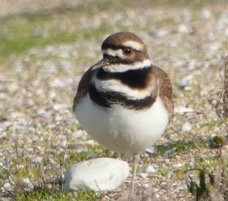Killdeer

ComingsBirds.com
to the beauty of birds

- Home California Birds
- SLIDESHOW
- SUMMARY OF ALL BIRDS
- MOVIES
- American Avocet
- American Coot
- Blackbirds/Crows
- Blue-grey gnatcatcher
- Brant
- Brown Pelican
- Chickade Mountain
- Comings' Backyard
- Common Loon
- Curlew Long-billed
- Dowitcher Long-billed
- Dowitcher Short-billed
- DUCKS
- EGRETS
- Dunlin
- Godwit Marbled
- Goldfinch Lesser
- GREBES
- Gnatcatcher Blue-grey
- Grosbeak Black-headed
- Gull California
- HUMMINGBIRDS
- Gull Heermann's
- Heron Black-crowned
- Heron Great Blue
- House Finch
- Jays
- Killdeer
- Merganser Red-breasted
- Nutcracker Clark's
- NutmegMannikin.com
- Other Birds
- Phainopepla
- Phoebe Say's
- Plover Black-bellied
- Plover Western Snowy
- Quail California
- Kittywake Black-legged
- Recent Additions
- Roadrunner Greater
- Sandpiper Least
- Sandpiper Western
- Sally's Fish
- Sanderling
- Shore Birds Other
- Skimmer Black
- Sparrow White-crowned
- Song Sparrow
- Stilt Black-necked
- Surf Scoter
- Swallow Tree
- Teal Blue-winged
- Teal Green-Winged
- Teal Cinnamon
- Tern Common
- Tern Elegant
- Turnstone Black
- Turnstone Ruddy
- Western Meadowlark
- Whimbrel
- Willet
- Yellow Leggs
- WOODPECKERS
- Template
- Contact Me
The Killdeer (Charadrius vociferus) is a large plover found in the Americas. It was described and given its current scientific name in 1758 by Carl Linnaeus in the 10th edition of his Systema Naturae.
The killdeer's common name comes from its often-heard call. Its upperparts are mostly brown with rufous fringes, the head has patches of white and black, and there are two black breast bands. The belly and the rest of the breast are white.
The non-breeding habitat of the killdeer includes coastal wetlands, beach habitats, and coastal fields. Its breeding grounds are generally open fields with short vegetation (but locations such as rooftops are sometimes used); although it is a shorebird, it does not necessarily nest close to water.
The killdeer primarily feeds on insects, although other invertebrates and seeds are eaten. It forages almost exclusively in fields, especially those with short vegetation and with cattle and standing water. It primarily forages during the day; but, in the non-breeding season, when the moon is full or close to full, it forages at night. This is likely because of increased insect abundance and reduced predation during the night.
© 2009 David Comings Contact Me
